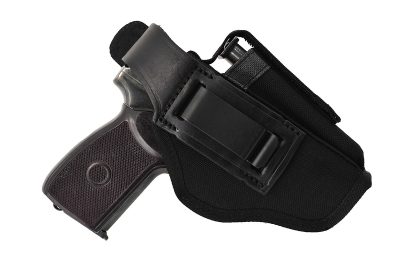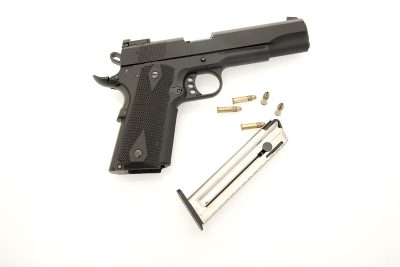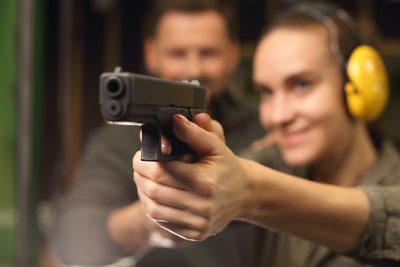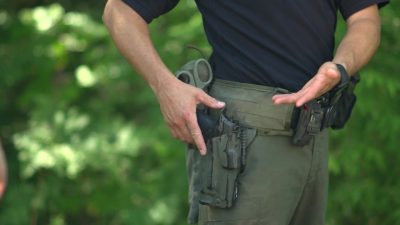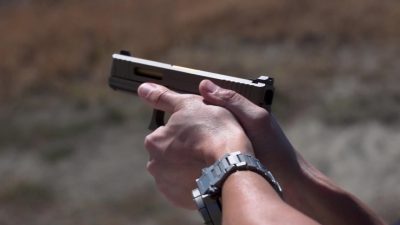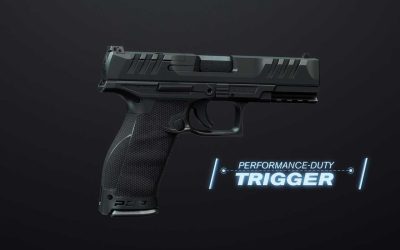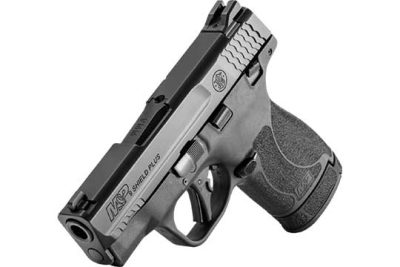4 Motorcycle Carry Methods that Work (2 that really don’t)
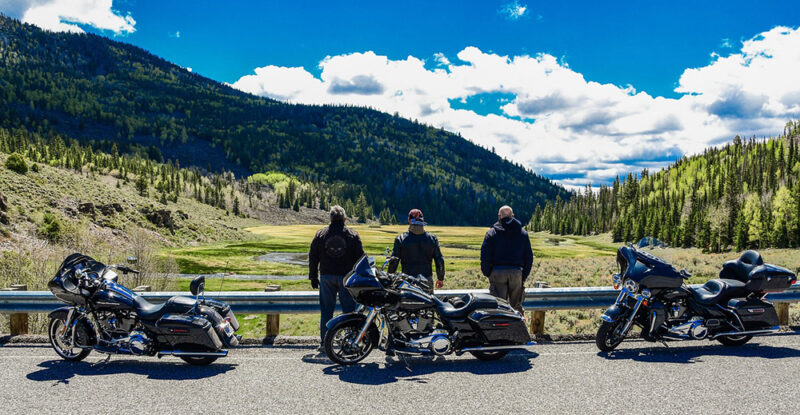
In the defensive world, handguns are great equalizers. However, it takes more than just having a handgun to be effective in a situation. That handgun has to be accessible. Basically, you have to be able to get a gun into action if needed, quickly. This can be a problem in situations where securing the handgun is just as important, such as in motorcycle carry.
Motorcycle carry requires both access and security. Riders need to be able to get to their gun, but they don’t want it bouncing out while going down the highway. Then, there is the issue of situational access, getting hands on the gun regardless of whether on or off the bike. All this is part of motorcycle defensive tactics.
Choosing a motorcycle carry method requires thought, along with some trial and error. Everyone’s situation and needs are different, depending on a variety of factors. These include area temperature, style of motorcycle and especially comfort. No one wants an uncomfortable motorcycle carry rig. Nor does anyone want a rig that is only accessible in certain situations.
In fact, carrying multiple guns might be the best option, or at least having multiple carrying methods; one for riding and another for the body when getting off to walk around. That provides access in most situations, but someone might notice the swap.
Motorcycle Carry Methods
There are numerous ways to carry a handgun while riding a motorcycle. All can be good or bad, depending on the situation. Most motorcycle carry rigs are much easier to get to when not on the bike.
There might, however, be times when it would be beneficial to obtain access while moving. This usually means by the non-throttle hand. For that reason, riders might want to consider a carry rig for each hand. Here are some pros and cons surrounding the best motorcycle carry rigs in order.
Shoulder Holster
Carrying in a shoulder holster keeps the weight of the handgun, along with spare ammo, on the shoulders and easily concealed. This method is particularly good if wearing a leather jacket or cut. The downside is that the cover garment must be unzipped or unsnapped for access. Drawing with the offhand is possible but difficult. Maybe have a gun hanging from both sides?
Jacket or Cut

There are a lot of concealed carry vests (cuts) or jackets on the market. Many of these are leather, allowing the sewing of club patches. These jackets work great for motorcycle carry, as they come with holsters or have compartments for holsters. Unfortunately, they also require opening for access, and are even more difficult in which to make an offhand draw.
Tank Holster or Bag
One of the easiest ways to obtain an offhand draw, if needed, is with a tank holster. Or possible tank saddle bags. The handgun can be secured for access when riding and swapped to the body when stepping away from the bike. Downsides include the potential of someone seeing the gun hanging on the motorcycle or when moving it to a body holster. It could also come loose in wreck, scaring bystanders or just disappearing somewhere on the highway.
Strong Side

Strong-side carry is the most recommended carry method by experts, whether IWB or OWB. Strong-side works walking, standing or even riding. Rigs are easily covered with a jacket or vest and speed of draw is excellent, unless the bike is moving. The strong-side hand can reach and draw, but only after coming off the throttle. Also, those who lean forward when riding, such as on sport bikes, could reveal the gun without realizing it.
Bellyband
Few would recommend the bellyband for motorcycle carry, but it is better than nothing. Bellyband isn’t the easiest to access in the best of circumstances; it is going to be slow as hell in motorcycle gear. It might work as deep concealment backup, if one is carry more than two guns.
Ankle Carry
Ankle carry is another than just wouldn’t be recommended on a motorcycle. It is not easy to get hands on a gun on the ankle, especially if sitting on a bike. However, the biggest reason is because carrying a handgun right next to a running engine isn’t a smart move. Plastic and polymer can melt, and steel can get hot. Maybe inside of a boot? Of course, access would be even more limited.
Determining a motorcycle carry method is personal. Everyone is different, with different needs and levels of comfort. Still, defensive-minded riders need to figure out a way to carry an equalizer.
By Paul Rackley, GunBroker Editor

